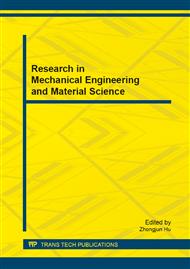p.96
p.100
p.106
p.110
p.115
p.120
p.125
p.129
p.133
Angle Measurement Based on Computer Vision
Abstract:
In order to improve the precision and the speed of angle measurement,A new method for measuring the angle of the workpiece is presented in this paper, which is based on the computer vision testing technology. The image of workpiece is obtained, the first step is image preprocessing, then the measured worpiece image is processed by edge detection through Canny algorithm, specific features of workpieces edge is fully extracted, Then one can accomplish line detection by using Hough transform, Finally, the angle value is obtained through the means of Angle Calculation. By employing practical examples in engineering and simulation experiments, the experimental results proved the method has more strong anti-interference ability, more high accuracy and speed than traditional method.
Info:
Periodical:
Pages:
115-119
Citation:
Online since:
October 2013
Authors:
Keywords:
Price:
Сopyright:
© 2014 Trans Tech Publications Ltd. All Rights Reserved
Share:
Citation:


